The High Q Factor Lateral Field–Excited Thickness Shear Mode Film Bulk Acoustic Resonator Working in Liquid
Abstract
:1. Introduction
2. Device Structure and Simulation Mode
3. Device Fabrication
4. The Result of FEM
4.1. The Influence of Electrode Gap g
4.2 The Influence of Electrode Length and Width
5. The Performance of the Fabricated Device
6. Conclusions
Acknowledgments
Author Contributions
Conflicts of Interest
References
- Zhou, C.J.; Shu, Y.; Yang, Y. Flexible structured high-frequency film bulk acoustic resonator for flexible wireless electronic. J. Micromech. Microeng. 2015, 25, 055003. [Google Scholar] [CrossRef]
- Lee, S.; Mortazawi, A. An Intrinsically switchable ladder-type ferroelectric BST-on-Si composite FBAR filter. IEEE Trans. Ultrason. Ferroelectr. Freq. Control 2016, 63, 456–462. [Google Scholar] [CrossRef] [PubMed]
- Aigner, R.; Ella, J.; Timme, H.J. Advancement of MEMS into RF-filter applications. In Proceedings of the IEDM’02 International Electron Devices Meeting, San Francisco, CA, USA, 8–11 December 2002; pp. 897–900.
- Lu, Y.; Chang, Y.; Tang, N.T. Detection of volatile organic compounds using microfabricated resonator array functionalized with supramolecular monolayers. ACS Appl. Mater. Interfaces 2015, 7, 17893–17903. [Google Scholar] [CrossRef] [PubMed]
- Zhang, M.; Huang, J.; Cui, W.; Pang, W.; Zhang, H.; Zhang, D. Kinetic studies of microfabricated biosensors using local adsorption strategy. Biosens. Bioelectron. 2015, 74, 8–15. [Google Scholar] [CrossRef] [PubMed]
- Zhao, X.B.; Pan, F.; Ashley, G.M. Label-free detection of human prostate-specific antigen (hPSA) using film bulk acoustic resonators (FBARs). Sens. Actuators B 2014, 190, 946–953. [Google Scholar] [CrossRef]
- Katardjiev, I.; Yantchev, V. Recent developments in thin film electro-acoustic technology for biosensor applications. Sensors 2012, 86, 520–530. [Google Scholar] [CrossRef]
- Wang, J.; Chen, D.; Xu, Y.; Liu, W. Label-free immunosensor based on micromachined bulk acoustic resonator for the detection of trace pesticide residues. Sens. Actuators B 2014, 190, 378–383. [Google Scholar] [CrossRef]
- Wingqvist, G. AlN-based sputter-deposited shear mode thin film bulk acoustic resonator (FBAR) for biosensor applications—A review. Surf. Coat. Technol. 2010, 205, 1279–1286. [Google Scholar] [CrossRef]
- Xu, W.; Zhang, X.; Choi, S. A high-quality-factor film bulk acoustic resonator in liquid for biosensing applications. J. Microelectromech. Syst. 2011, 20, 213–220. [Google Scholar] [CrossRef]
- Evgeny, M.; Sandrine, G.; Paul, M. Shear mode bulk acoustic wave resonator based on c-axis oriented AlN thin film. J. Appl. Phys. 2008, 104, 084508. [Google Scholar]
- Zhang, H.; Marma, M.S.; Kim, E.S.; McKenna, C.E. A film bulk acoustic resonator in liquid environments. J. Micromech. Microeng. 2005, 15, 1911–1916. [Google Scholar] [CrossRef]
- Link, M.; Schreiter, M.; Weber, J.; Primig, R. Solidly mounted ZnO shear mode film bulk acoustic resonators for sensing applications in liquids. IEEE Trans. Ultrason. Ferroelectr. Freq. Control 2006, 53, 492–496. [Google Scholar] [CrossRef] [PubMed]
- Nirschl, M.; Rantala, A.; Tukkiniemi, K. CMOS-integrated film bulk acoustic resonators for label-free biosensing. Sensors 2010, 10, 4180–4193. [Google Scholar] [CrossRef] [PubMed] [Green Version]
- Zheng, D.; Xiong, J.; Guo, P. AlN-based film buck acoustic resonator operated in shear mode for detection of carcinoembryonic antigens. RSC Adv. 2016, 6, 4908–4913. [Google Scholar] [CrossRef]
- Zhou, C.J.; Yang, Y.; Ren, T.L. Finite element analysis of lateral field excited thickness shear mode film bulk acoustic resonator. Compel 2012, 31, 1892–1900. [Google Scholar] [CrossRef]
- Zhang, H.; Kim, E.S. Micromachined acoustic resonant mass sensor. J. Microelectromech. Syst. 2005, 14, 699–706. [Google Scholar] [CrossRef]
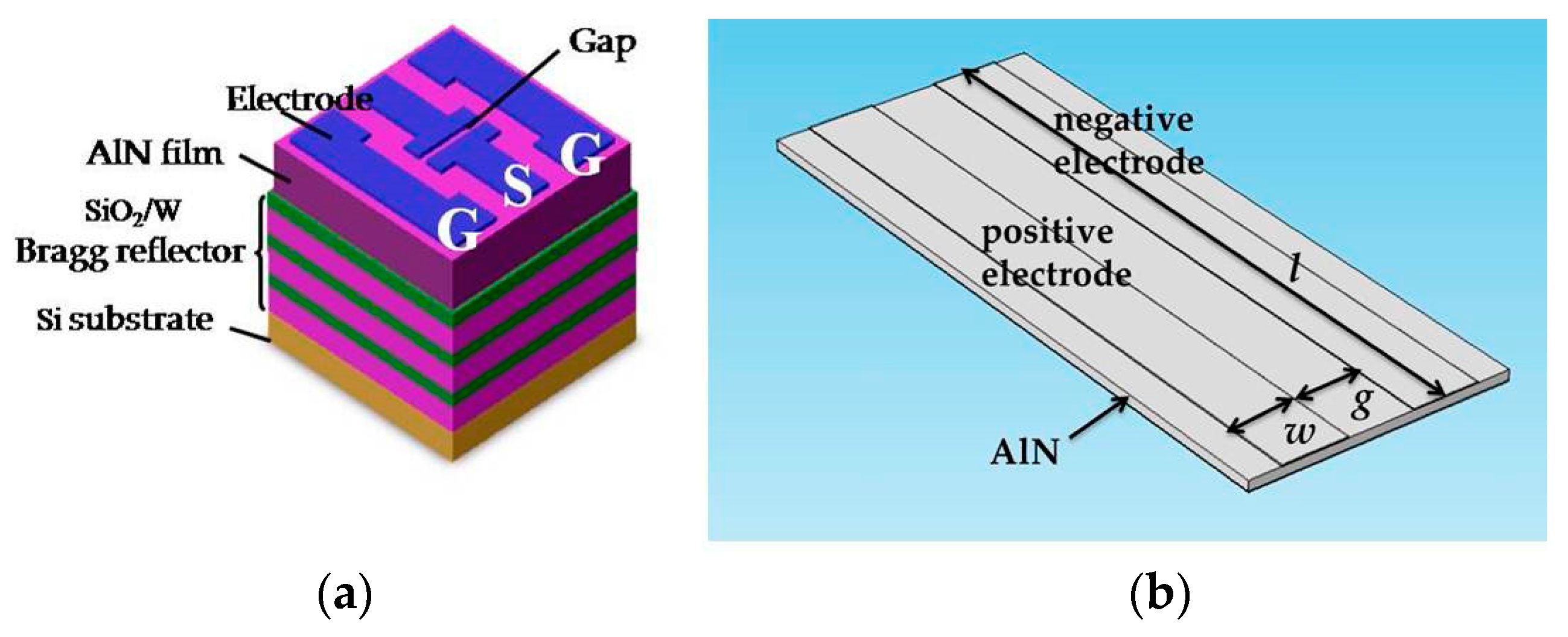
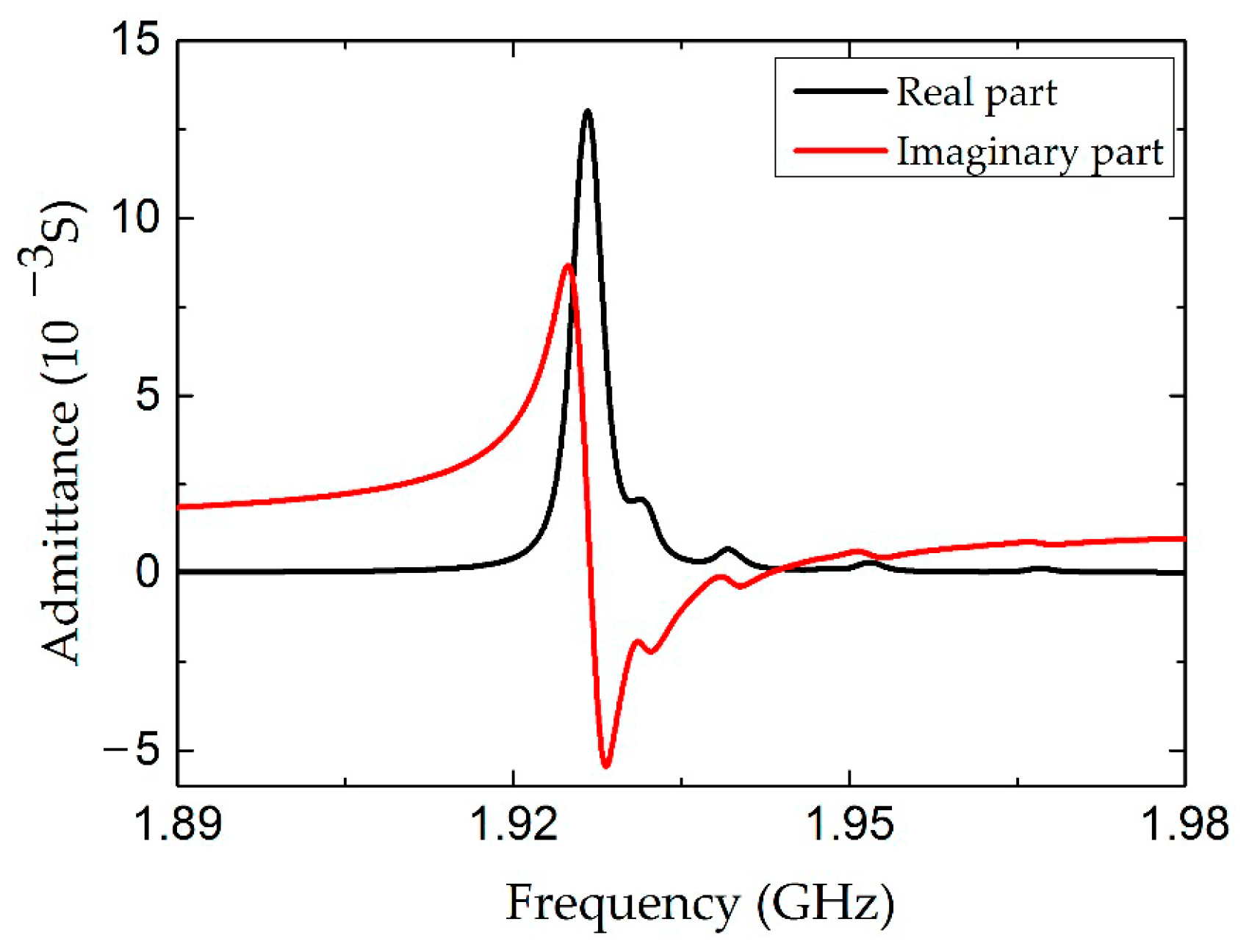
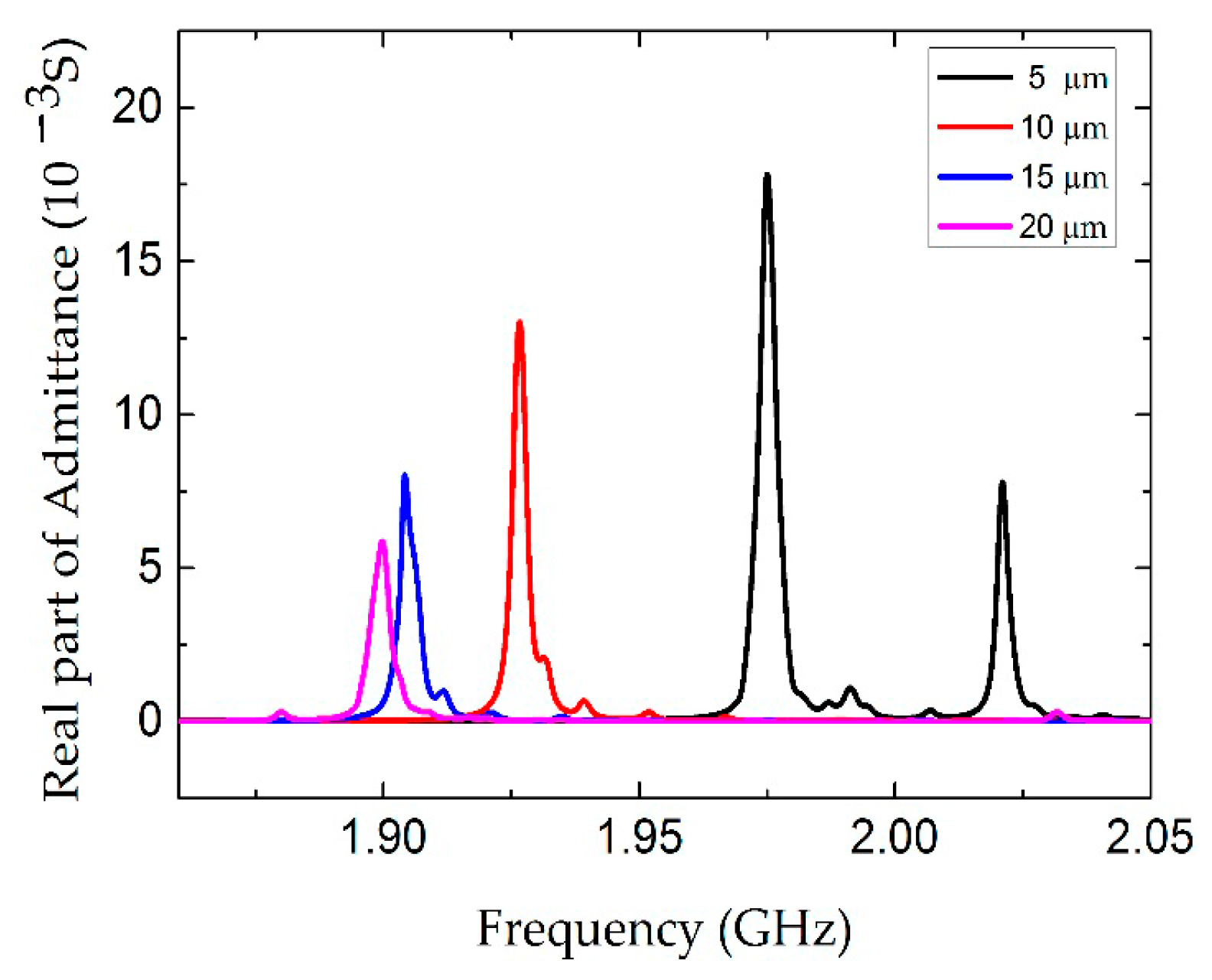
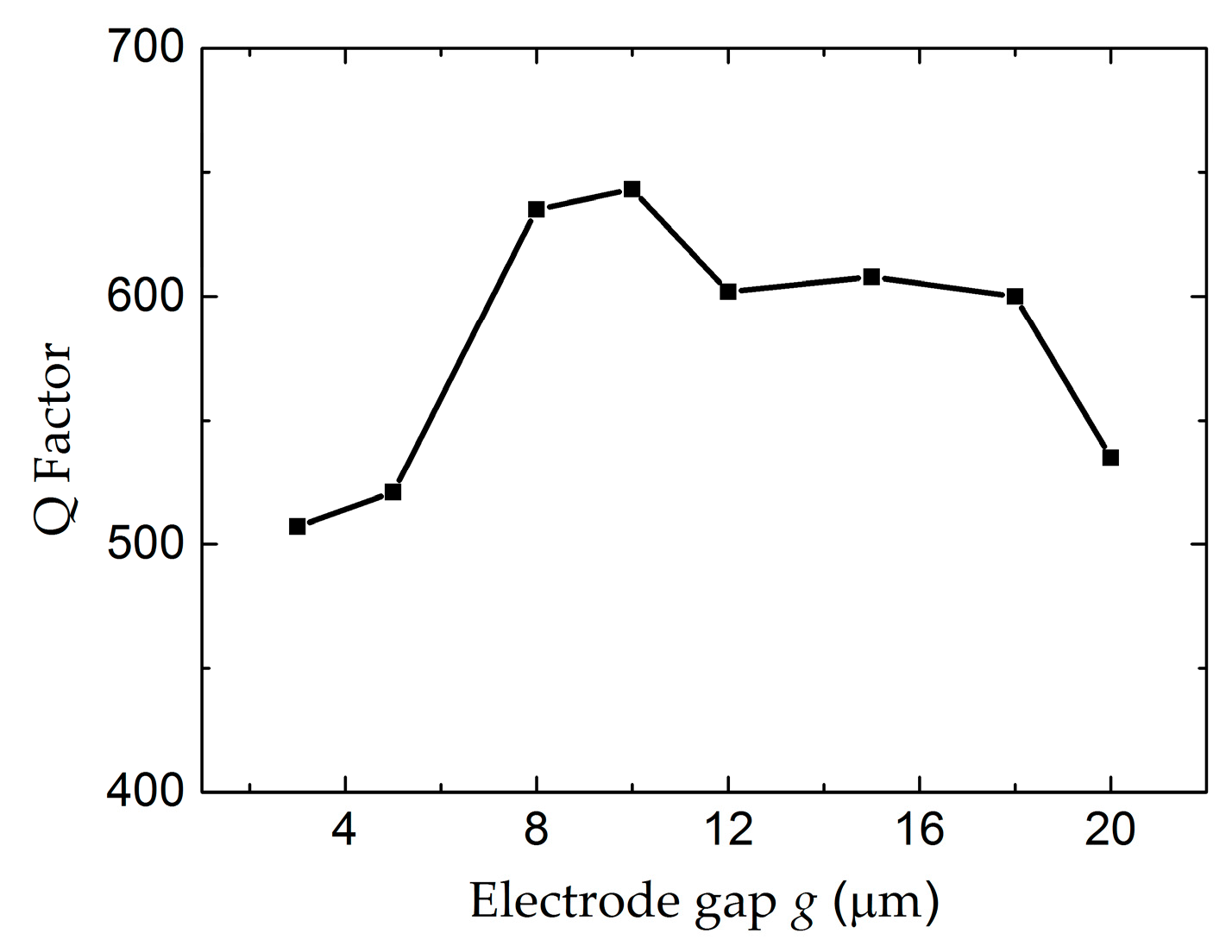
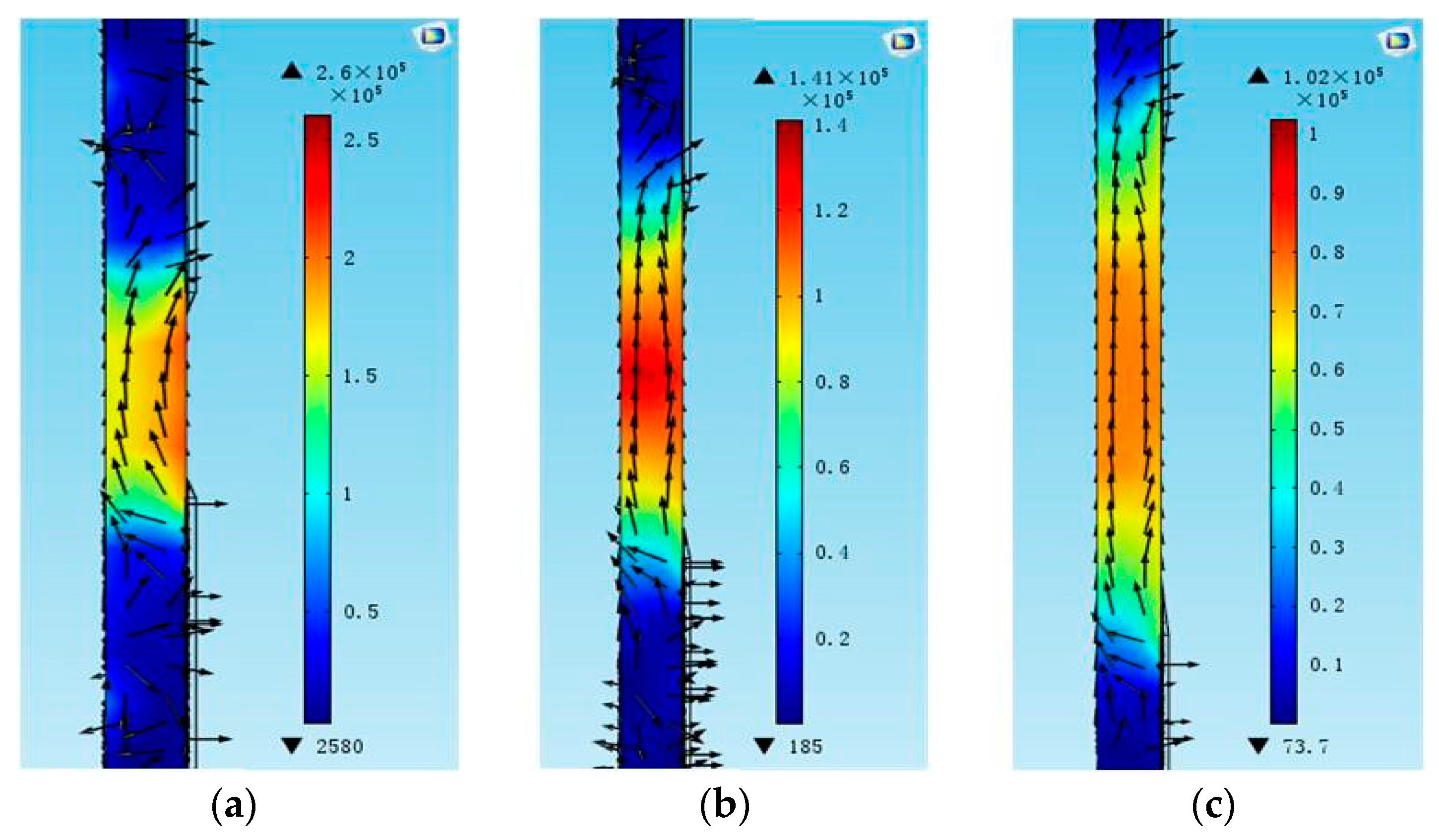
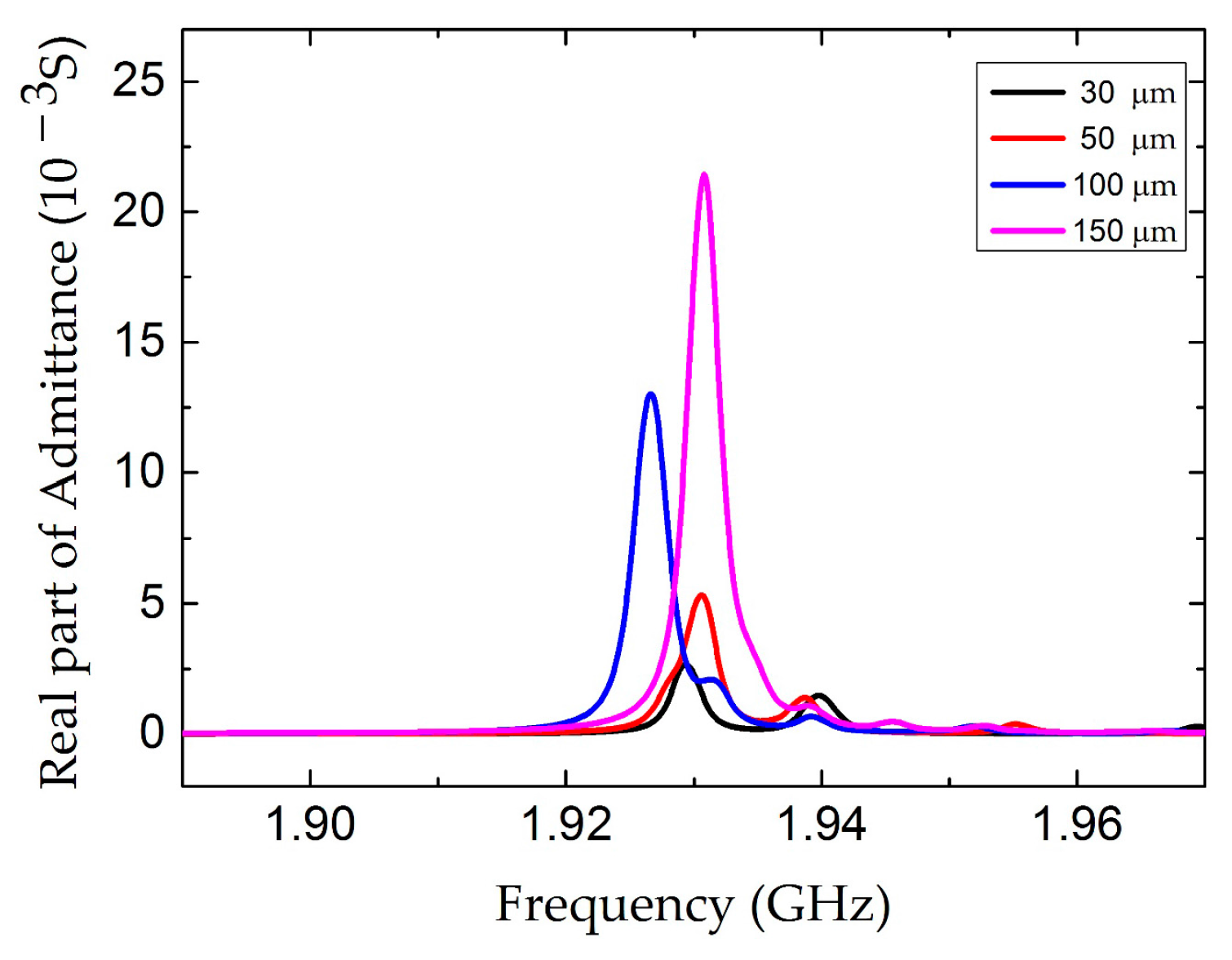

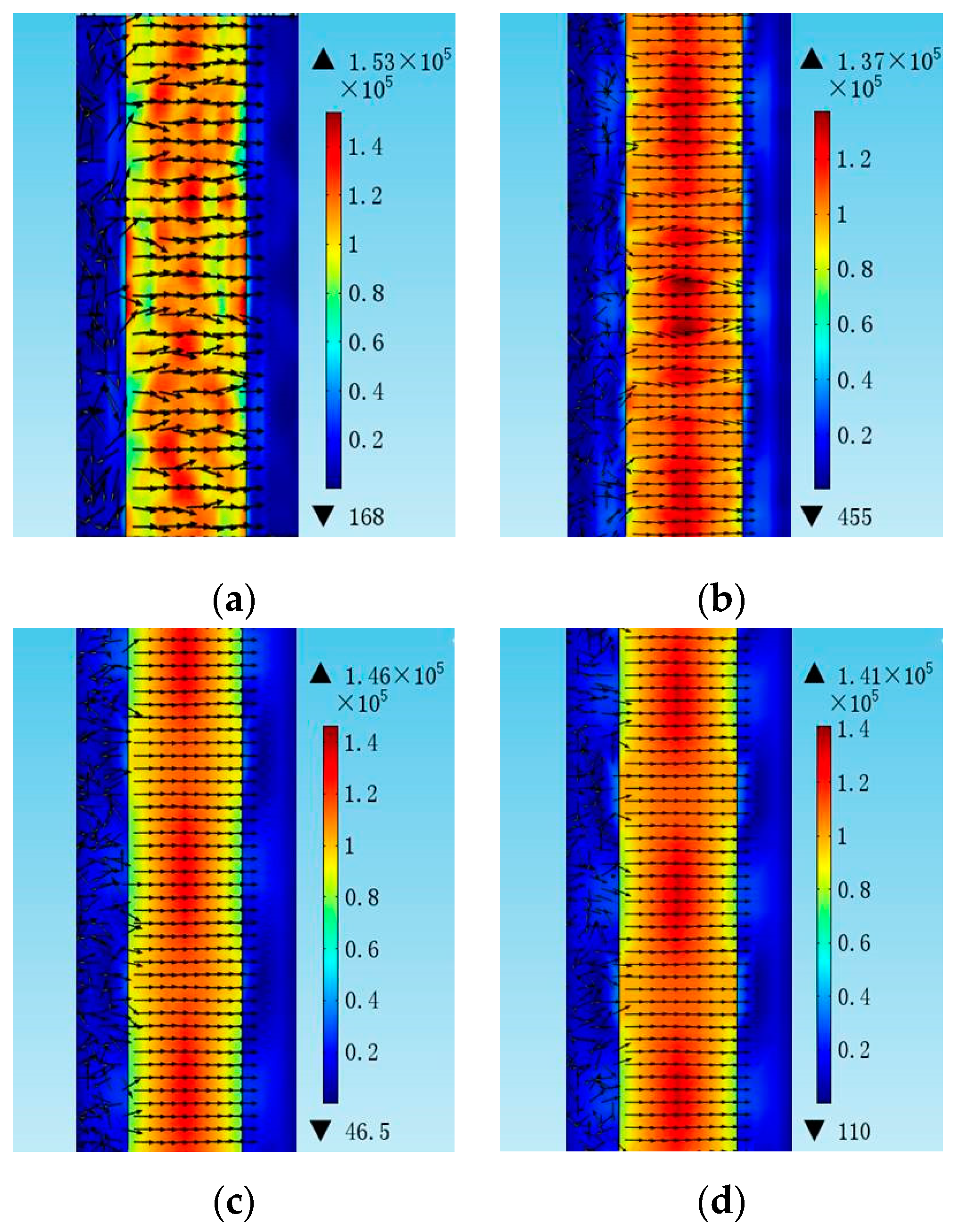

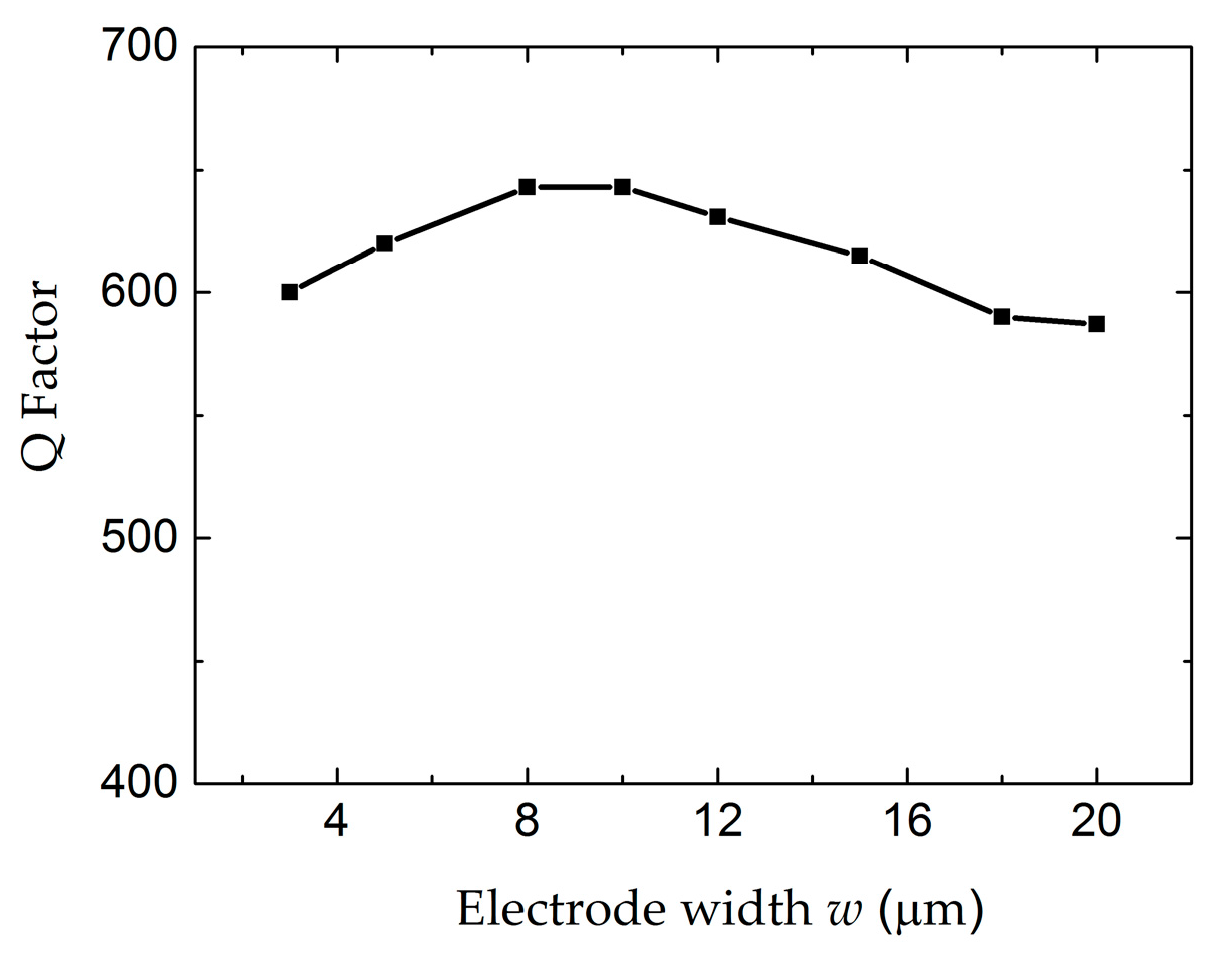
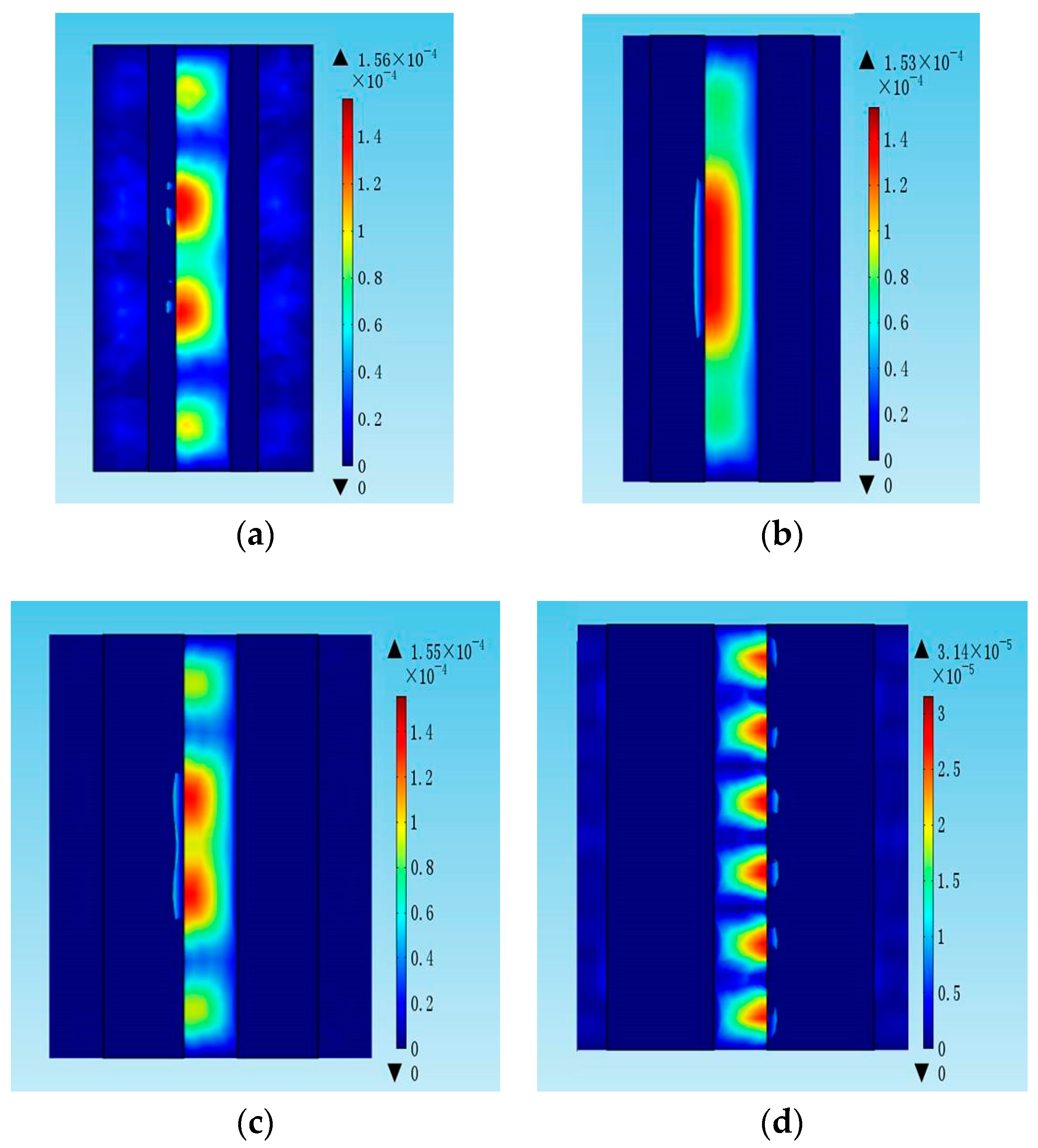

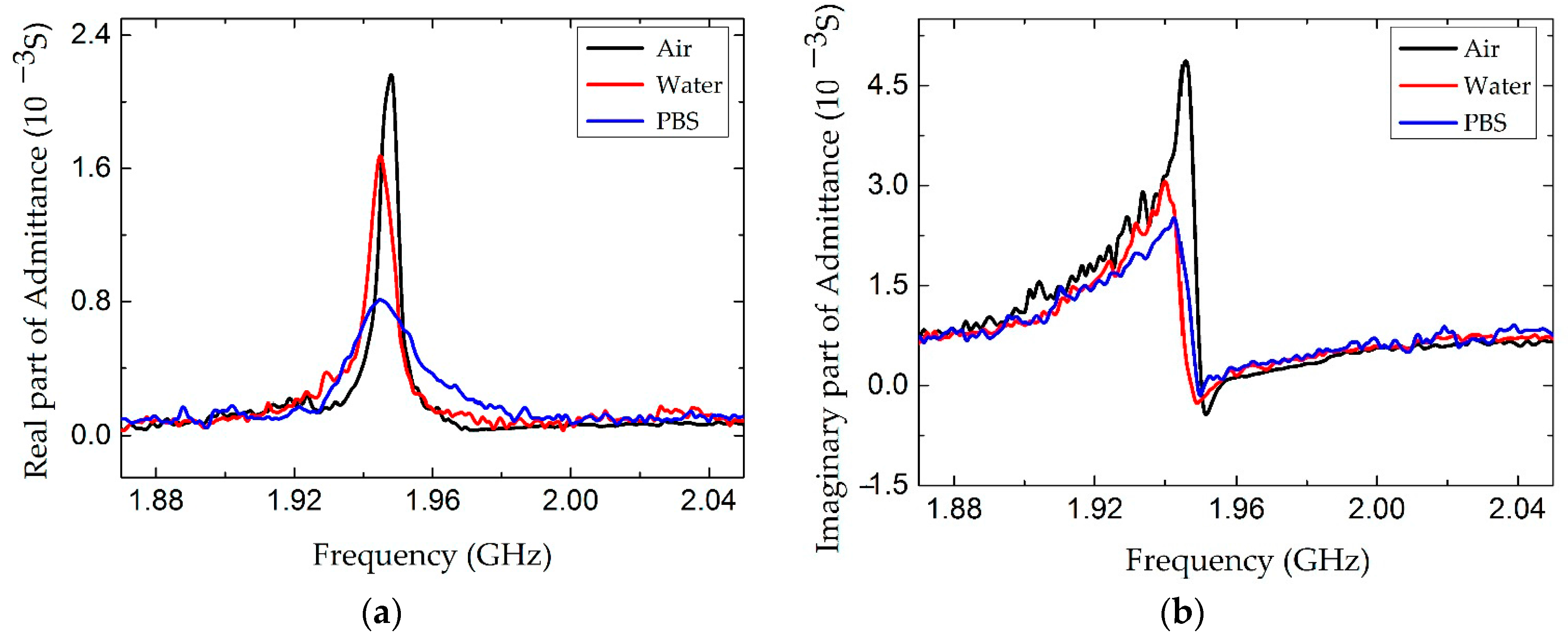
| Layer | Power (W) | Pressure (Pa) | Gas Flow (sccm) | Substrate Temperature (°C) |
|---|---|---|---|---|
| AlN | RF 150 | 0.6 | Ar:8 N2:6 | 300 |
| SiO2 | RF 200 | 0.3 | Ar:5 | 150 |
| W | DC 100 | 0.3 | Ar:5 | 150 |
| Parameters | Air | Water | PBS |
|---|---|---|---|
| f/GHz | 1.948 | 1.944 | 1.944 |
| Q | 405 | 216 | 102 |
© 2016 by the authors. Licensee MDPI, Basel, Switzerland. This article is an open access article distributed under the terms and conditions of the Creative Commons Attribution (CC-BY) license ( http://creativecommons.org/licenses/by/4.0/).
Share and Cite
Chen, D.; Ren, W.; Song, S.; Wang, J.; Liu, W.; Wang, P. The High Q Factor Lateral Field–Excited Thickness Shear Mode Film Bulk Acoustic Resonator Working in Liquid. Micromachines 2016, 7, 231. https://doi.org/10.3390/mi7120231
Chen D, Ren W, Song S, Wang J, Liu W, Wang P. The High Q Factor Lateral Field–Excited Thickness Shear Mode Film Bulk Acoustic Resonator Working in Liquid. Micromachines. 2016; 7(12):231. https://doi.org/10.3390/mi7120231
Chicago/Turabian StyleChen, Da, Wenwen Ren, Shuren Song, Jingjing Wang, Weihui Liu, and Peng Wang. 2016. "The High Q Factor Lateral Field–Excited Thickness Shear Mode Film Bulk Acoustic Resonator Working in Liquid" Micromachines 7, no. 12: 231. https://doi.org/10.3390/mi7120231





